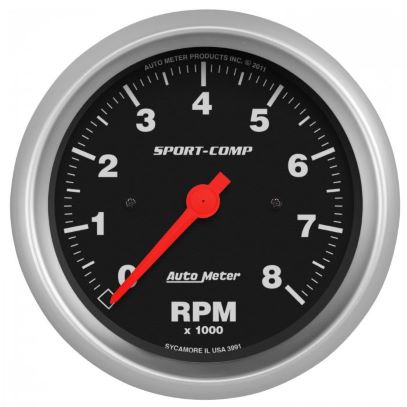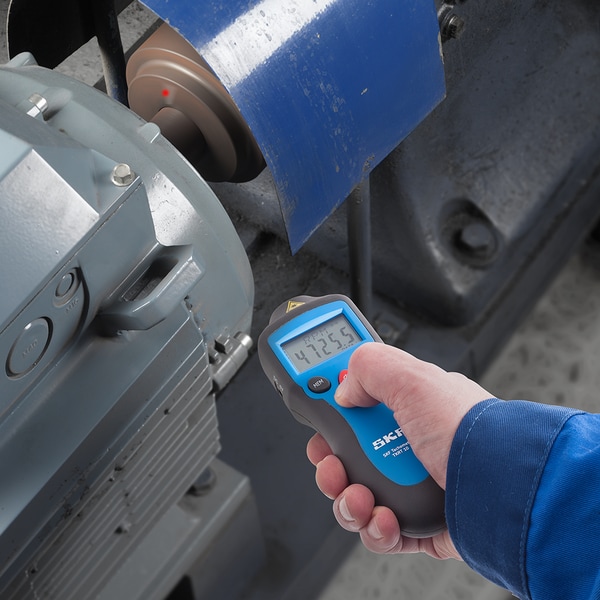Tachometer Fundamentals: Whatever You Required to Know for Accurate Readings
Tachometer Fundamentals: Whatever You Required to Know for Accurate Readings
Blog Article
Opening the Keys of Tachometers: Whatever You Need to Find Out About This Vital Tool in Your Lorry
Understanding the ins and outs of tachometers can supply important insights right into your automobile's performance and maintenance needs. From determining engine speed to deciphering the information it provides, tachometers act as a critical tool for car owners and enthusiasts alike. By unraveling the mysteries behind this essential instrument, you can open a wide range of details that can boost your driving experience and ensure the longevity of your car.
Value of Tachometers
The importance of tachometers hinges on their capacity to supply important real-time data regarding an engine's rotational speed, permitting accurate surveillance and maintenance of equipment. By measuring the changes per minute (RPM) of an engine's crankshaft, tachometers supply important insights right into the engine's performance - tachometer. This information is important for making certain that the engine operates within its optimum range, preventing possible damage from over-revving or underperforming
Tachometers play an essential role in assisting operators and service technicians detect any type of anomalies in the engine's rate, which could suggest concerns such as fuel ineffectiveness, mechanical troubles, or excessive stress on the engine. By without delay identifying these problems via tachometer readings, maintenance can be done proactively, protecting against costly repair services and downtime in the future.
Furthermore, tachometers are especially critical in high-performance vehicles and machinery, where exact control over engine rate is essential for optimum operation. Racing vehicles, aircraft, and industrial devices rely upon tachometers to provide peak efficiency while keeping safety and security criteria. Essentially, tachometers are not just instruments for measuring speed but essential tools for guaranteeing the smooth and effective operation of engines across various applications.
How Tachometers Measure Engine Speed
Making use of sensing units that discover the frequency of electric pulses produced by the engine's ignition system, tachometers accurately determine the rotational speed of an engine. By monitoring the price at which these pulses are obtained, tachometers give real-time comments on how quickly the engine's crankshaft is turning per min, frequently referred to as changes per minute (RPM)
The tachometer's sensing unit, commonly linked to the engine's ignition coil or spark plug cords, picks up the electric signals produced each time a cyndrical tube fires. These signals are then exchanged RPM analyses presented on the gauge or tool cluster within the motorist's view. Tachometers can be analog or electronic, with modern automobiles commonly including electronic displays for specific and instant RPM analyses.
This details is important for vehicle drivers to comprehend the engine's efficiency, protect against over-revving, enhance equipment shifting, and guarantee reliable fuel consumption. By precisely gauging engine speed, tachometers play a crucial duty in helping chauffeurs run their automobiles safely and effectively.
Analyzing Tachometer Readings
Having a clear understanding of exactly how tachometers gauge engine rate establishes the foundation for efficiently translating the RPM analyses presented. Interpreting tachometer readings is important for ideal lorry performance and engine health. RPM (Revolutions Per Minute) readings on the tachometer suggest the rate at which the engine's crankshaft is turning. When the engine is idling, the tachometer needle commonly relaxes around 600-1000 RPM, depending on the vehicle. As you accelerate, the RPM will increase, reflecting the engine's higher rotational speed. When shifting gears in a manual transmission vehicle, the RPM will certainly drop as you engage the clutch and modification gears, then rise once again as you speed up in the new gear. Keeping track of the tachometer can assist you identify the most efficient shifting points to optimize gas economic climate and engine power. Furthermore, unusual fluctuations or continually high RPM analyses might suggest potential issues with the engine that might need expert attention. By taking note of the tachometer analyses and recognizing exactly how to interpret them, you can ensure your car operates efficiently and effectively.


Tips for Using Tachometers Properly
To improve driving performance and enhance engine efficiency, what trick techniques can be executed for efficiently using tachometers? Tachometers are important devices that offer real-time comments on engine speed, making it possible for drivers to make informed decisions for better performance - tachometer. Here are some pointers for using tachometers effectively:
Recognizing Ideal RPM Array: Acquaint yourself with the ideal RPM (Changes Per Minute) range for your automobile. This array ranges various vehicles and is normally shown in the owner's manual. Keeping the engine within this array can boost fuel efficiency and extend the engine's life expectancy.
Shifting Gears at the Right Time: Use the tachometer to figure out the most effective time to change equipments. Upshifting also very early or far too late Learn More can cause lowered performance and efficiency. Aim to shift equipments when the RPM gets to the optimum array for the following equipment.
Keeping An Eye On Engine Anxiety: High RPMs for extended periods can strain the engine. Keep an eye on the tachometer to stop over-revving, specifically throughout velocity or when bring heavy lots.
Tachometers and Lorry Upkeep
When thinking about car maintenance, tachometers play a critical role in keeping track of engine performance and detecting possible problems. Tachometers offer important data their explanation on engine rate, enabling drivers and technicians to make sure that the engine is operating within the advised RPM variety. On a regular basis keeping track of the tachometer readings can aid determine problems such as engine misfires, damaged spark plugs, or concerns with the fuel delivery system. By focusing on the tachometer, chauffeurs can protect against extreme strain on the engine, which can cause costly fixings down the line.
In enhancement to identifying prospective concerns, tachometers can likewise assist in optimizing fuel performance. By maintaining the engine speed within the optimal array, vehicle drivers can boost their gas mileage and minimize gas consumption. This not just profits the driver's purse yet additionally adds to environmental preservation by decreasing hazardous exhausts.
Final Thought

Report this page